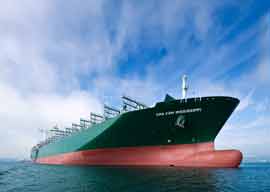
February 04, 2016

Source: Shutterstock
January 2016. A hard landing for world markets and the world economy.
Leading indicator the Baltic Dry Index, which measures the cost of chartering a cargo ship, fell to an all-time low last week. The cost of hiring a 335-meter ship has dived, by over 90% since last August, to around $1,500 per day, Zero Hedge reported. “It is now cheaper to hire a supertanker than a Ferrari,” MoneyWeek enthused, reporting shipping executives” fears of industry “Armageddon” and even of the freight industry “going under.”
Mohamed El-Erian, former PIMCO CEO, now chief economist at multinational behemoth Allianz”and the most impeccable interpreter of the global economy”put the probability of a recession in 2016 to Bloomberg at 30%. In emerging markets (EMs), borrowing costs have hit their highest level in five years, inciting fears of a “debilitating credit crunch” in the developed world, the FT said. Simultaneously it reported ICBC Standard Bank’s data that “investors are deserting emerging market bonds at the fastest rate on record, withdrawing more money than they did at the height of the financial crisis,” even. This exodus continued throughout January with circa $8 billion in outflows over three weeks.
FT commentator Katie Martin wrote on Jan.18 that “metals are in meltdown. Oil is falling faster than forecasts can keep up.” And the IMF is concerned that EMs are crisis-bound”oh, and the bears are taking over on Wall Street. “Sell (mostly) everything,” wrote one RBC analyst. Only, as she pointed out, “many of the usual emergency exits are bricked up…. Investors are cornered.”
No kidding. Even the positive correlation between volatile markets and gold-price increases no longer holds fast, although gold started the year well, rising 5% in 30 days. However, the S&P 500 had fallen 15% by Jan.21, just short of the one-fifth decline that defines a bear market. The Dow Jones Transportation Average, another economic barometer, fell clearly into bear territory along with the Russell 2000 small-companies index.
Bright spots are rare. You have to look at the micro level; the macro picture is unclear. Yet depressed stock prices such as Apple’s (AAPL)”which hovered around $95 on Feb.1, well below $133 eleven months ago”mean contemporaneous uncertainty may have spooked flighty investors into selling…leaving the occasional good deal behind? Investors Chronicle awarded AAPL a second “Buy” rating following November’s, highlighting that “at the $100 mark, they trade at just ten times forecast earnings for this year.” A blue-chip stock with 30% off?
Another bright spot can be found in Amazon (AMZ), whose price languished Feb.1 at $528.38, against a high of $641.93 only 60 days previously. Especially when you factor in eye-opening research published by the FT that reveals how Amazon’s Web Services (AWS) division is growing into a juggernaut business of its own. Amazon Web Services sales continue to grow at 69% per year, with growth in operating income of 161% per.
Amazon (with Netflix) is winning the home-entertainment race, as the Motley Fool discussed, along with the rising buying power of tech companies in Hollywood. A “race to zero””meaning: competitive cost-cutting”is under way up on “the cloud,” with tech megacorps fighting for your attention. And nobody undercuts prices better than Amazon. Is it a buy, before word gets around that Amazon has two huge heads?